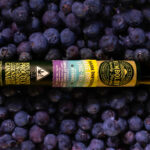“You can’t judge a book by its cover.”
I can vouch for that. I’ve read some truly terrible books encased in gorgeous jackets. Sadly, I’m not alone in letting my eyes overrule my intellect. Research has shown that after the title, a book’s cover is the most significant driver of sales. That’s why publishers and independent authors spend thousands of dollars creating the perfect wrapper to tease the content inside. A prime example: Excepting Harlequin, how many heterosexual romance novels have you seen without a half-naked man on the cover? Mystery and suspense novels sell best with dark, atmospheric artwork bracketing the pages. Self-help book covers strive to convey power and positivity, and children’s books often present lighthearted illustrations out front.
Magazines also follow publishing’s “golden rule” by placing intriguing headlines and photographs or illustrations on their covers. Even traditional newspapers emblazon the area above the fold on page one—the part that’s visible on newsstands—with a bold banner headline and compelling photograph.
Why? Because readers judge books, magazines, and newspapers by their covers. In publishing, simply getting a potential customer to pick up the product from a crowded shelf is more than half the battle in getting them to buy it.
In the same way, consumers judge products by their packaging. You can test that assumption yourself. Walk into a retail store you haven’t patronized before and visit a section with products you normally don’t purchase. (Try the foreign-foods aisle of a grocery store.) What pulls you in? What do you pluck off the shelf for a closer look?
Of course, there’s a lot more to designing perfect packaging for consumer packaged goods than merely creating a beautiful outer shell. Packaging also must protect what’s inside and convey the brand’s ethos, particularly when part of the mission is sustainability. In many cases, containers need to present warnings and usage and/or storage instructions. They also may need to be child-proof or senior-friendly and—especially in the case of cannabis and other regulated products—adhere to sector-specific labeling mandates. That’s some heavy lifting for a product component that may be discarded right away.
In this industry, packaging is a branding opportunity no one can afford to waste. Both readers and cannabis consumers judge products by their covers. What are your covers saying about you?
Kathee Brewer is the editorial director for Inc Media, the parent company of mg Magazine. An Air Force veteran and award-winning journalist, editor, and author, she lives in Austin, Texas.













